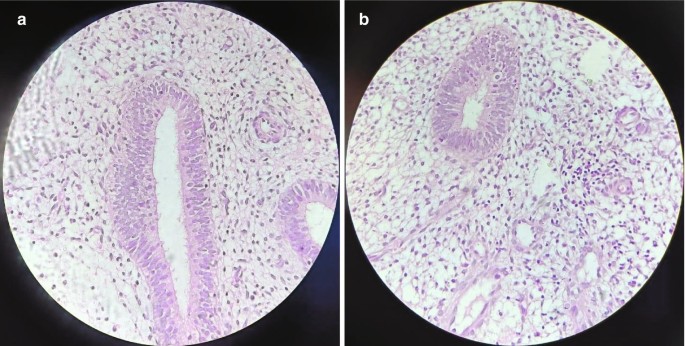Postpartum endomyometritis caused by Prevotella species is a severe obstetric infection characterized by inflammation of the endometrium and myometrium. These gram-negative anaerobic bacilli are increasingly implicated in polymicrobial uterine infections, particularly following cesarean deliveries or complicated vaginal births. Their role in pelvic infections is significant due to their virulence, resistance patterns, and potential for rapid clinical deterioration if inadequately treated.

Understanding the Pathogenic Role of Prevotella in Postpartum Infections
Prevotella spp., including Prevotella bivia and Prevotella disiens, are common components of vaginal and gastrointestinal microbiota. Under certain postpartum conditions—such as tissue necrosis, prolonged labor, and surgical trauma—these anaerobes proliferate and invade the uterine cavity, leading to endomyometritis.
These bacteria possess proteolytic enzymes and lipopolysaccharides that contribute to tissue damage and inflammation. Their ability to co-aggregate with other pathogens, such as Gardnerella vaginalis or Escherichia coli, further enhances their pathogenicity.
Risk Factors for Prevotella-Associated Postpartum Endomyometritis
Several predisposing factors increase the risk of Prevotella-induced uterine infections:
- Cesarean delivery without adequate prophylactic antibiotics
- Prolonged rupture of membranes (>18 hours)
- Retained placenta or products of conception
- Frequent vaginal examinations during labor
- Obstetric instrumentation or uterine manipulation
- Pre-existing bacterial vaginosis
- Postpartum hematoma or surgical site infection
These risk factors facilitate the transition from benign colonization to pathogenic infection in the postpartum uterus.
Clinical Presentation of Prevotella Endomyometritis
Symptoms generally appear within 3 to 10 days postpartum and may progress rapidly if untreated. Key clinical signs include:
- High-grade fever (>38.5°C)
- Foul-smelling, purulent lochia
- Uterine tenderness and subinvolution
- Lower abdominal pain or cramping
- Tachycardia and chills
- Leukocytosis with elevated inflammatory markers
- Signs of systemic toxicity or early sepsis
In some cases, the infection can extend to the parametrium, pelvic veins, or cause uterine abscesses.
Diagnostic Approach to Confirm Prevotella-Related Endomyometritis
Clinical Assessment
A thorough clinical examination combined with obstetric history is the cornerstone of diagnosis. Fever and uterine tenderness in the absence of urinary tract or wound infections should raise suspicion.
Laboratory Investigations
- Complete blood count: Leukocytosis with left shift
- C-reactive protein and ESR: Elevated levels indicating inflammation
- Blood cultures: Essential in febrile patients to detect bacteremia
- Endometrial cultures: Anaerobic-specific sampling techniques required
- Polymerase chain reaction (PCR): Useful for detecting Prevotella DNA in clinical samples
Imaging Studies
- Pelvic ultrasound: First-line modality to assess for retained products or intrauterine collections
- CT/MRI pelvis: Utilized in severe or nonresponsive cases to detect abscesses or pelvic spread
Antimicrobial Management of Prevotella-Associated Endomyometritis
Treatment necessitates aggressive antibiotic therapy with specific coverage for anaerobic organisms, particularly Prevotella spp., which exhibit beta-lactamase activity and may resist standard regimens.
Empirical Antibiotic Regimens
- Clindamycin + Gentamicin: First-line therapy with excellent anaerobic and gram-negative coverage
- Ampicillin-Sulbactam or Piperacillin-Tazobactam: Broad-spectrum alternatives
- Metronidazole adjunct: Enhances anaerobic coverage if used with other antibiotics
Targeted Antibiotic Therapy
Upon laboratory confirmation, therapy may be adjusted to include:
- Metronidazole (IV or oral): Effective against Prevotella strains
- Moxifloxacin: An option in outpatient or step-down settings
- Carbapenems: Reserved for severe infections or when resistance is suspected
Therapy duration typically spans 10 to 14 days, extended based on response and complications.
Adjunctive and Surgical Interventions
When antibiotic therapy alone fails or complications arise, further interventions may be necessary:
- Dilation and curettage (D&C): For removal of retained placental fragments
- Abscess drainage: Via ultrasound-guided or surgical approach
- Laparotomy: In cases of widespread infection or peritonitis
- Hysterectomy: Rare, reserved for refractory or life-threatening infections
Supportive care with fluid resuscitation, pain control, and close monitoring is essential in all severe cases.
Prevention of Prevotella Uterine Infections in the Postpartum Period
Intrapartum Strategies
- Prophylactic antibiotics for cesarean sections (e.g., cefazolin + metronidazole for high-risk cases)
- Minimization of vaginal examinations
- Sterile techniques for all surgical interventions
Postpartum Surveillance
- Early detection of retained products or hematoma
- Treatment of bacterial vaginosis in late pregnancy
- Prompt management of any postpartum fever or uterine abnormalities
Preventive care protocols significantly reduce the incidence of Prevotella-related infections.
Complications Arising from Untreated Prevotella Endomyometritis
Delayed or inadequate management of Prevotella-driven postpartum infections can result in:
- Uterine abscess or necrosis
- Pelvic cellulitis or thrombophlebitis
- Bacteremia and systemic sepsis
- Long-term infertility
- Increased maternal mortality in severe cases
Early intervention remains crucial in averting life-threatening outcomes.
Prognosis and Recovery
With timely initiation of targeted antibiotics and supportive care, most patients achieve full recovery without sequelae. Those who receive delayed care or present with complications may require longer hospitalization and surgical management. Continued postpartum follow-up ensures complete resolution and prevention of recurrence.
Postpartum endomyometritis due to Prevotella is a serious yet manageable obstetric condition. Its association with anaerobic flora, resistance to certain antibiotics, and potential for rapid progression demand early recognition and aggressive treatment. Clinicians must maintain a high index of suspicion in postpartum women presenting with fever, foul lochia, and uterine tenderness—especially in the presence of risk factors. Prompt antibiotic therapy, surgical intervention when needed, and prevention strategies are critical to safeguarding maternal health.